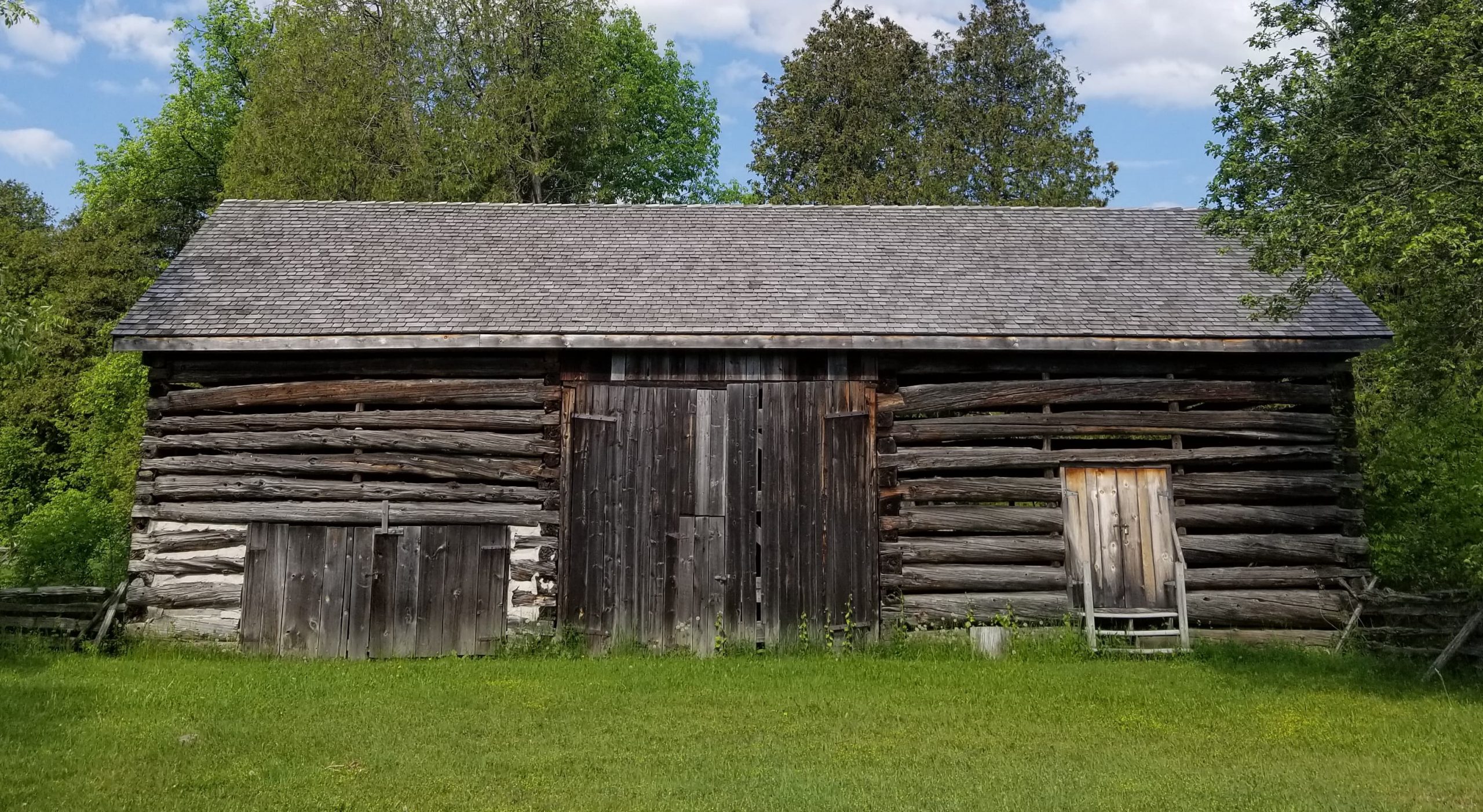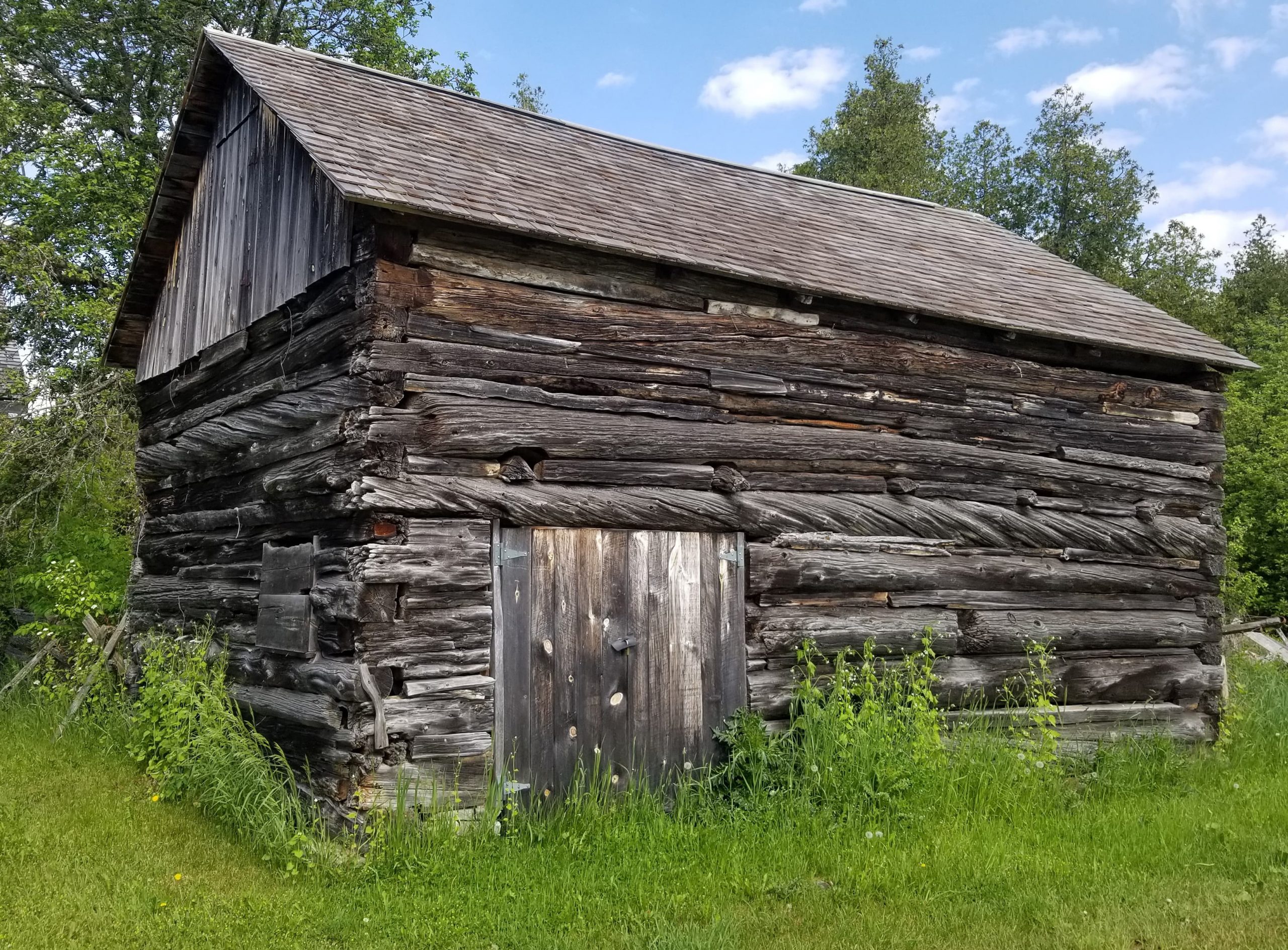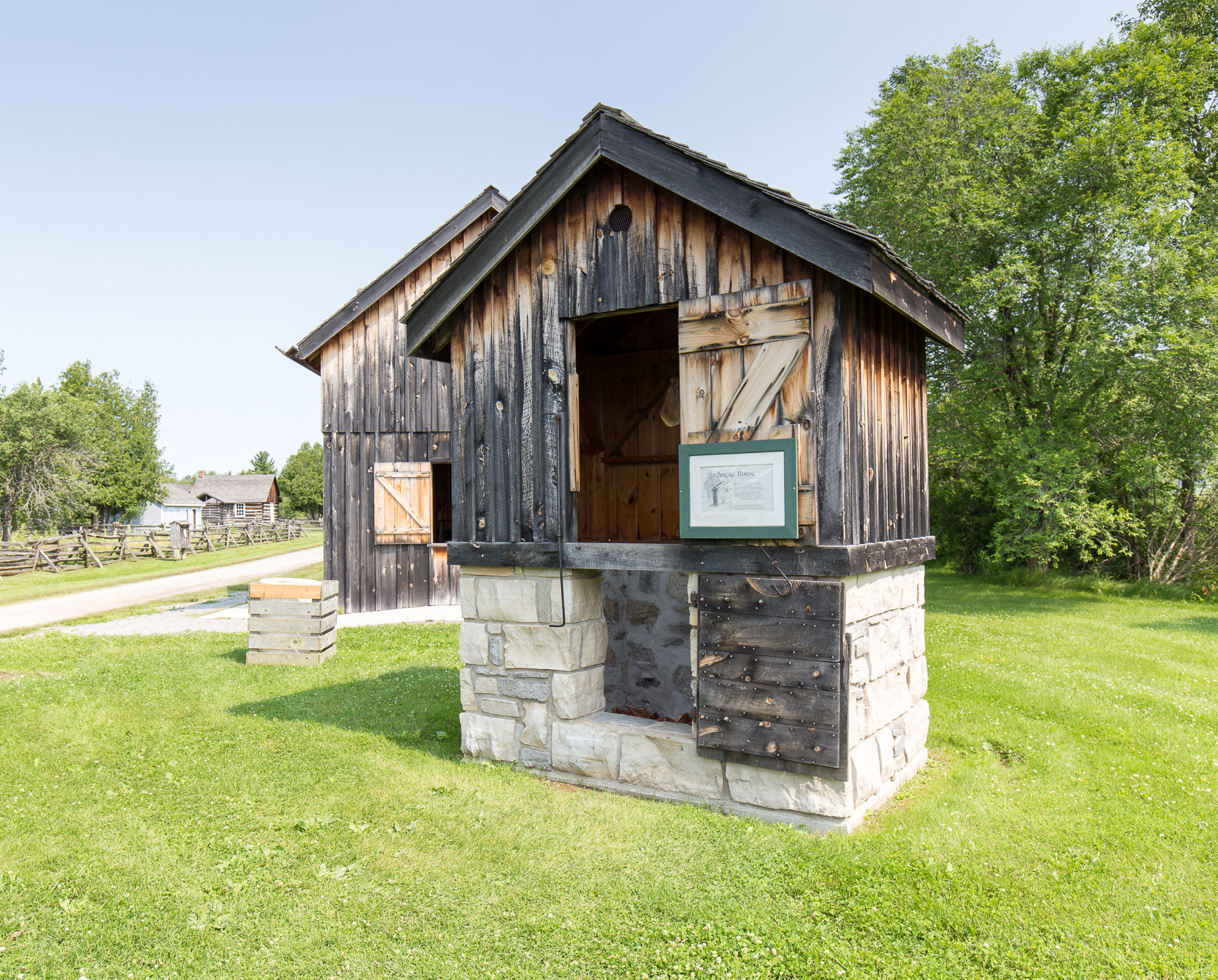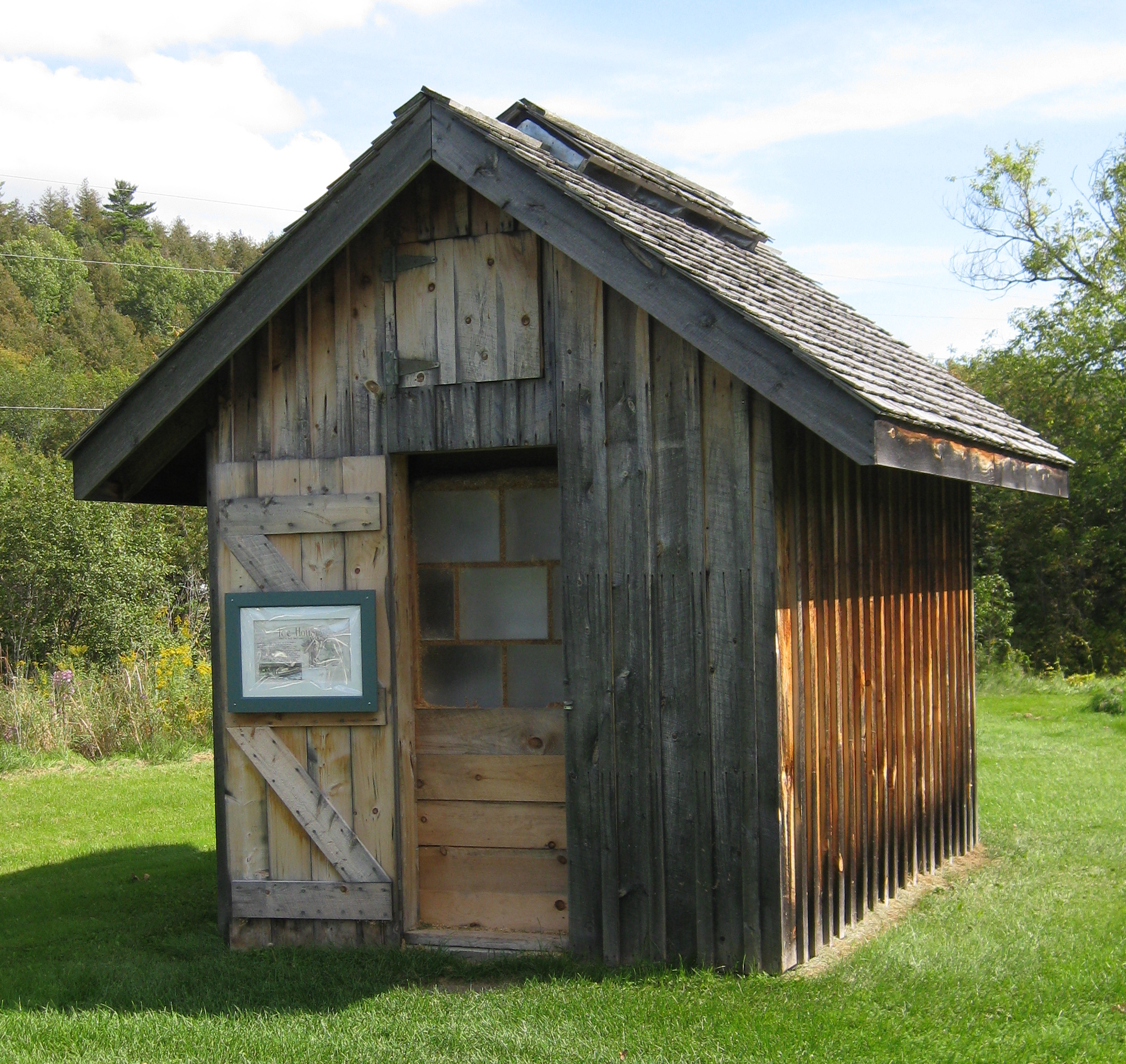Out Buildings

Log Barn
This large log barn is known as an English Barn or a Three Bay Barn. These barns were built on either four cornerstones or bare earth to allow it to flex with the frost. Inside, a central drive floor between the cribs was wide enough for a yoke of oxen and wagon to pass through. Threshing would take place in the central ally with the grain being stored on either side. The spaces between rough unhewn logs work double purpose, providing light to see and ventilation for the grain stored in the barn. A log building was cheap to build and created a structure strong enough to withstand the weight of a heavy stack of grain.
Horse Barn
This is a good example of the settler’s first barn. The first barns were made of logs, but it was not long before sawmills became common and barns made of sawed boards and hand-hewn timber frames became the norm. After several years of hard work, a family would be able to build a larger and more sustainable frame or brick house. Once moved into their new home, the original log house was often used as an extra barn. Although the first settlers would have started farm work with oxen, at some point in its history, this barn was used for housing horses.


Smoke House
Most pork was preserved with a combination of salting, pickling and smoking. This ensured that it would last throughout the winter and the following summer. In the smoke house a firepit was set in the centre of the earth floor and green wood was burned, preferably hickory, birch, sugar maple, white ash, or beech. After smoking for about six weeks, the hung meat was removed and covered with a linen, cotton, or flannel bag, to keep flies, moths, worms, and beetles off the meat.
Ice House
Ice blocks were cut from local rivers or lakes in the coldest winter weather using an ice saw. The blocks had to be precisely square to make it easier to load and haul. As well, the better the fit of the ice in the ice house, the better it kept. Sawdust was used as an insulator and was so effective that a harvest of ice, put in place in cold weather and properly packed with sawdust in a good building, could last for several years.

